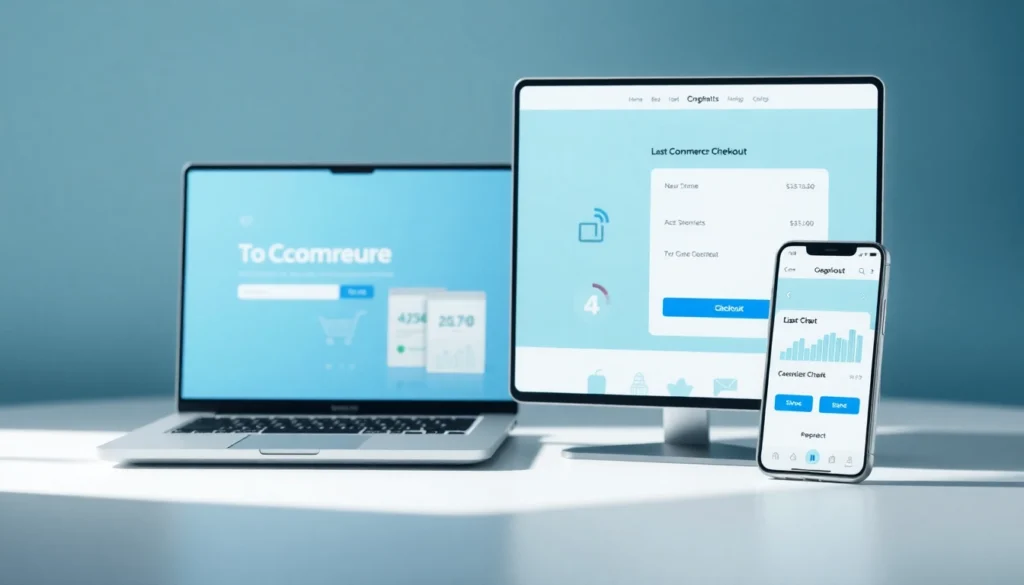Technology-Driven UX and Checkout: Practical E‑commerce Best Practices for Business Operations

Customer decisions hinge on how quickly they understand value, trust the brand, and complete a purchase. The convergence of UX, checkout optimization, and AI-powered operations defines not just conversion rates, but long-term loyalty. This article synthesizes practical, data-driven guidance across five domains: UX-driven checkout, technology-driven insights, AI-enabled operations, and more. By tracing concrete steps, benchmarks, and common challenges, you can elevate both customer satisfaction and operational efficiency.
Understanding Technology-Driven UX and Checkout
Key Technology Concepts Shaping UX and Checkout
Effective UX and checkout rely on a set of core concepts: performance-first design to minimize latency; data-driven personalization that respects privacy; modular architecture enabling rapid experimentation; and omnichannel data synthesis that creates a seamless journey across devices. Each concept informs decisions, from layout decisions to how inputs are validated and stored.
- Performance-first design to reduce friction and abandonment.
- Real-time personalization guided by consented data signals.
- Modular, testable components that support A/B testing.
- Unified customer data to power consistent experiences.
Measuring Technology Performance: UX and Conversion Metrics
Quantifying success requires a focused metrics mix. Track technical metrics like page load time, Time to Interactive, and First Input Delay, alongside UX indicators such as task success rate and error-free form completion. Conversion-focused metrics include cart abandonment rate, checkout completion rate, and revenue per visitor, all monitored with controlled experiments to drive continuous improvement.
- Technical: load times, TTI, and uptime
- UX: task success and error rates
- Commerce: cart abandonment, checkout completion, average order value
Common Pitfalls in Technology-Enabled Checkout and How to Avoid Them
Common issues include overcomplicating forms, inconsistent UI states, and opaque error handling. To avoid them, implement progressive disclosure for data collection, ensure accessible error messages, and run frequent usability tests, including mobile-specific checks. Regular audits of third-party scripts and payment integrations prevent cascading performance slowdowns that blunt conversions.
Deploying Technology in Business Operations: Practical Frameworks
Roadmapping Tech Adoption and ROI
Begin with a clear business case that translates technology bets into quantified ROI. Build a phased roadmap that aligns with strategic priorities, assigns accountable owners, and defines milestone-based benefits. Use lightweight pilots to validate assumptions before scaling, and document learnings to refine the ROI model continuously.
Data Governance, Privacy, and Compliance in Tech Deployments
Data governance underpins trust and resilience. Establish data minimization, consent management, and transparent data retention policies. Align with privacy regulations (e.g., GDPR, CCPA) and implement access controls, auditing, and encryption to protect sensitive information across systems.
KPIs and Dashboards for Technology-Backed Operations
Effective dashboards synthesize operational health and business outcomes. Track KPIs such as system uptime, data quality scores, AI model accuracy, cycle time reductions, and cost per automation. Design dashboards for both technical teams and business stakeholders to ensure alignment and rapid decision-making.
Enriching Customer Interactions with Technology
Personalization Techniques and Multichannel Strategy
Personalization combines segmentation, behavioral triggers, and consented data to tailor content, recommendations, and offers across channels. A unified customer view enables consistent experiences on web, mobile, email, and chat, while respecting privacy preferences and opt-out choices. Test personalization depth gradually to balance impact with data privacy.
Automation, Support Tech, and Experience Orchestration
Automation streamlines repetitive workflows and supports proactive service. Use AI-powered assistants for routine inquiries, automated ticket routing, and orchestration across marketing, sales, and support to deliver timely resolutions. Align automation with human touchpoints to maintain warmth and trust in the customer journey.
Accessible Design and Conversion-Driven Interfaces
Accessible design expands reach and conversion potential. Apply WCAG 2.1 guidelines, ensure keyboard operability, provide meaningful alternative text, and maintain sufficient color contrast. Accessibility should be a performance metric, not an afterthought, contributing to broader audience reach and longer engagement.
STP in Technology Markets: From Segmentation to Positioning
STP Basics for Tech-Focused Audiences
Segmentation, Targeting, and Positioning (STP) in tech starts with defining buyer personas by role, influence, and tech maturity. Translate these personas into value propositions that address specific pain points—speed, reliability, security, or scalability. This focused messaging drives more efficient demand generation and product-market fit.
Leveraging Data to Segment Technology Buyers
Leverage technographic data, usage analytics, CRM signals, and firmographic context to create precise segments. Combine intent signals (e.g., research activity, trial requests) with historical purchasing data to identify high-probability buyers and tailor outreach and content accordingly.
Positioning Strategies and Performance Metrics
Positioning should articulate unique value, supported by measurable outcomes such as faster deployment, lower total cost of ownership, or enhanced security. Evaluate positioning through win rates, time-to-conversion, and net promoter indicator trends, adjusting as market signals evolve.
Advanced Design in Modern Projects and Multilingual Coding
Design Trends in Contemporary Construction Tech
Construction tech now embraces parametric design, digital twins, and BIM-enabled collaboration. These approaches enable faster prototyping, better clash detection, and more sustainable build outcomes. Real-world projects show how modularity and data-driven design shorten schedules without sacrificing quality.
Coding for Global Audiences: Multilingual Considerations
Global software teams benefit from thoughtful multilingual coding practices. Invest in internationalization (i18n) and localization (l10n) early, adopt Unicode standards, and design UI strings for easy translation. Consider right-to-left language support, date/number formats, and culturally aware content to serve diverse markets effectively.
Hiring, Budgeting, and Measuring Success in Tech Design
Budget for design platforms, design systems, and cross-team collaboration. Balance in-house and agency talents, maintain a reusable design system, and track impact through usability scores, design debt reduction, and post-launch conversion improvements. Regularly audit vendor work to ensure alignment with brand and accessibility standards.
Multi-language Coding: Why it matters for interview success
In interviews, assess a candidate’s ability to navigate multilingual codebases, localization challenges, and global collaboration. Look for examples of past projects where internationalization improved reach or reduced localization costs, and probe for strategies to maintain code quality across languages.
Key Tips for Hiring Designers Without Breaking the Bank
Maximize impact with scalable design systems, hybrid teams, and project-based partnerships. Prioritize reusable components, clear briefs, and measurable milestones. Leverage interns or junior designers under mentorship to grow in-house capability while keeping costs predictable.





